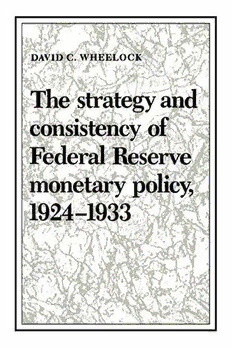
The Strategy and Consistency of Federal Reserve Monetary Policy, 1924–1933 PDF
142 Pages·1991·4.681 MB·English
Most books are stored in the elastic cloud where traffic is expensive. For this reason, we have a limit on daily download.
Preview The Strategy and Consistency of Federal Reserve Monetary Policy, 1924–1933
Description:
Today, most scholars agree that mismanaged monetary policy contributed to the length and severity of the Great Depression. There is little agreement, however, about the causes of the Federal Reserve's mistakes. Some argue that leadership and other organizational changes prior to the depression caused a distinct change in policy strategy that lessened the Fed's responsiveness to economic conditions, while others contend that there was no change in the Fed's behavior, and that errors during the depression are traceable to previous policies. This book examines the policy strategy developed by the Federal Reserve during the 1920s and considers whether its continued use could explain the Fed's failure to respond vigorously to the depression. It also studies the effects on policy of the institutional changes occurring prior to the depression. While these changes enhanced the authority of officials who opposed open-market purchases and also caused some upward bias in discount rates, Wheelock concludes that monetary policy during the depression was in fact largely a continuation of the previous policy. The apparent contrast in Fed responsiveness to economic conditions between the 1920s and early 1930s resulted from the consistent use of a procyclical policy strategy that caused the Fed to respond more vigorously to minor recessions than to severe depressions.
See more
The list of books you might like
Most books are stored in the elastic cloud where traffic is expensive. For this reason, we have a limit on daily download.
